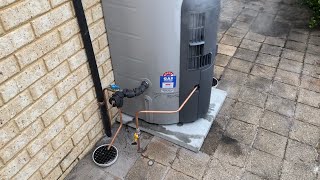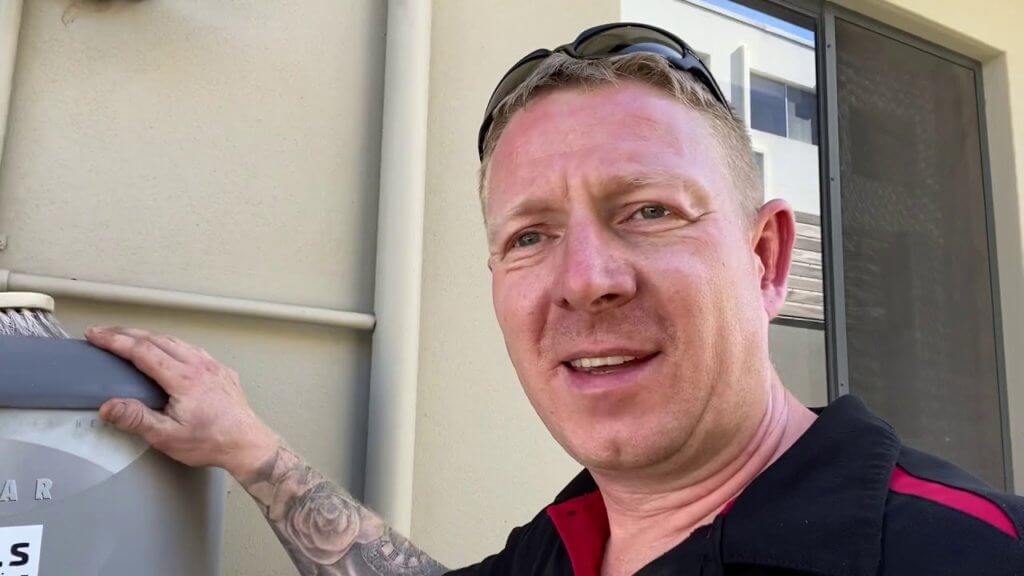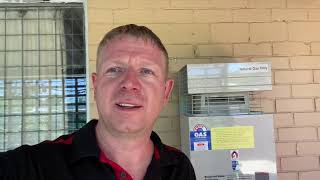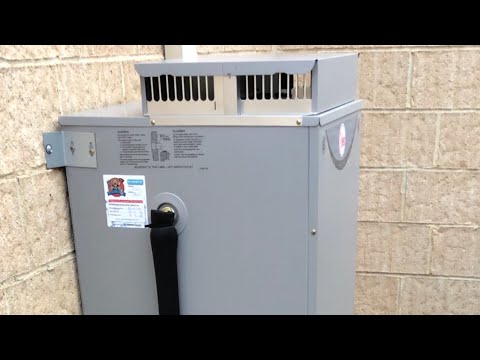- When a like for like gas hot water system replacement just isn’t possible
- The work of gas fitters in Perth are inspected by a third party which is good for the industry and consumer
- Check out more of our VLOGs & don’t forget to like and subscribe to our YouTube channel!
When It’s Time To Change a Hot Water System
This video will show how Richard replaces and relocated the gas storage hot water system at a home in Parkwood. He will be completing the installation and will make sure that it is compliant to the standard regulations of what installed hot water tanks should look like.
Tired Tank
When the client called, their problem was that they didn’t have hot water, the pilot light was out and there was a substantial amount of water leaking from the tank. Richard asked for some photos to make sure his diagnosis will be accurate before making any recommendation. Aside from the fact that the tank is 19 years old, it was missing compliant components such as a gas isolation valve and soak pits for the relief valves.
Options, options, options
After some meticulous investigation, Richard provides 3 quotes for the client. They will choose from a Vulcan 135, a Rheem 135 and a Rheem Stellar 330. The client followed Richard’s recommendation and chose the Rheem Stellar 330. With its advanced technology and given a 5-star energy efficiency, this tank is cost-effective in the long run, not to mention the 10-year warranty that gives the customer assurance that it is definitely built for the long haul.
Aside from getting a new tank, it is Richard’s job to make sure that it will be compliant to the standard regulations. He talked to the client that the best place to relocate the tank from the alcove corner is to the main wall next to it. The area will give ample space and clearance for the hot water storage. The client had to move their existing clothesline and will have to opt for a shorter line, or they will have to move it in a different part of the property.
Time to do the Dirty Work
Richard showed how he laid the pipework since he had to replace the old ones as they were as old as the tank. He made sure that the fittings are placed strategically, avoiding the tank so if in any case there are some problems in the future there will be no problems troubleshooting it. The worst thing is having to take out the entire gas system just to fix the fittings. He also laid a big concrete slab where the water heater will sit on. He also installed a gas isolation valve and the hot and cold relief valves now has soak pits. All installed and ticked the checklist for compliance requirements for a gas storage hot water system.
Whistle and We will Come
Our expert plumbers in Perth install and complete the work as efficiently as possible. We provide solutions that are compliant and cost efficient to our customers whether it’s replacing a new hot water system or giving your existing system the servicing it needs. Give us a whistle and we will come!






